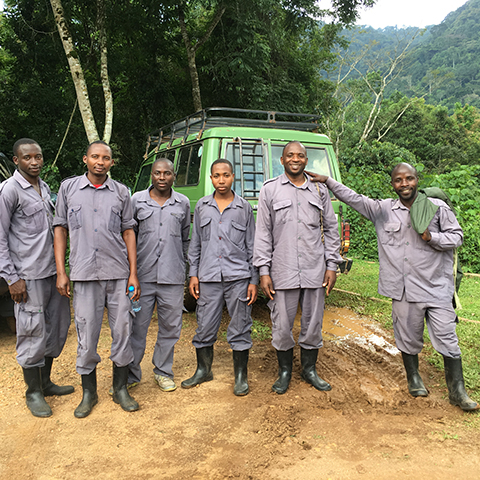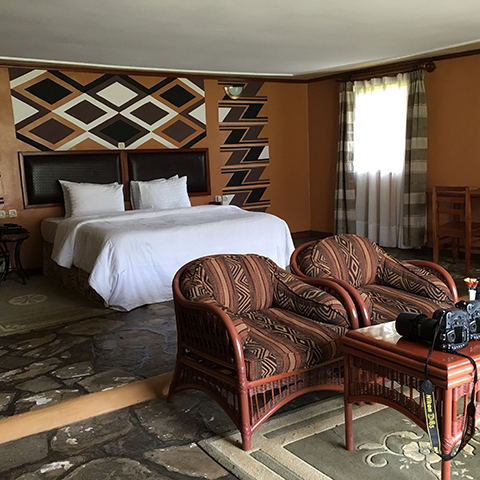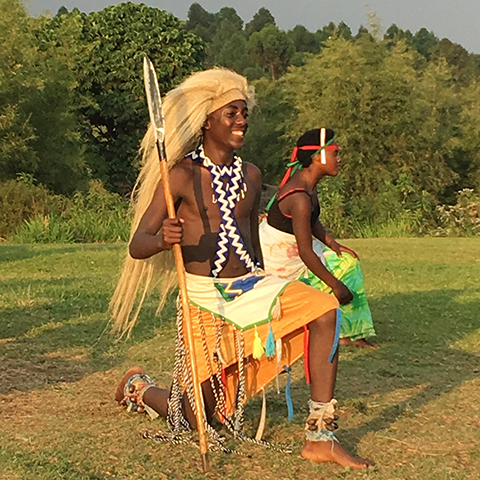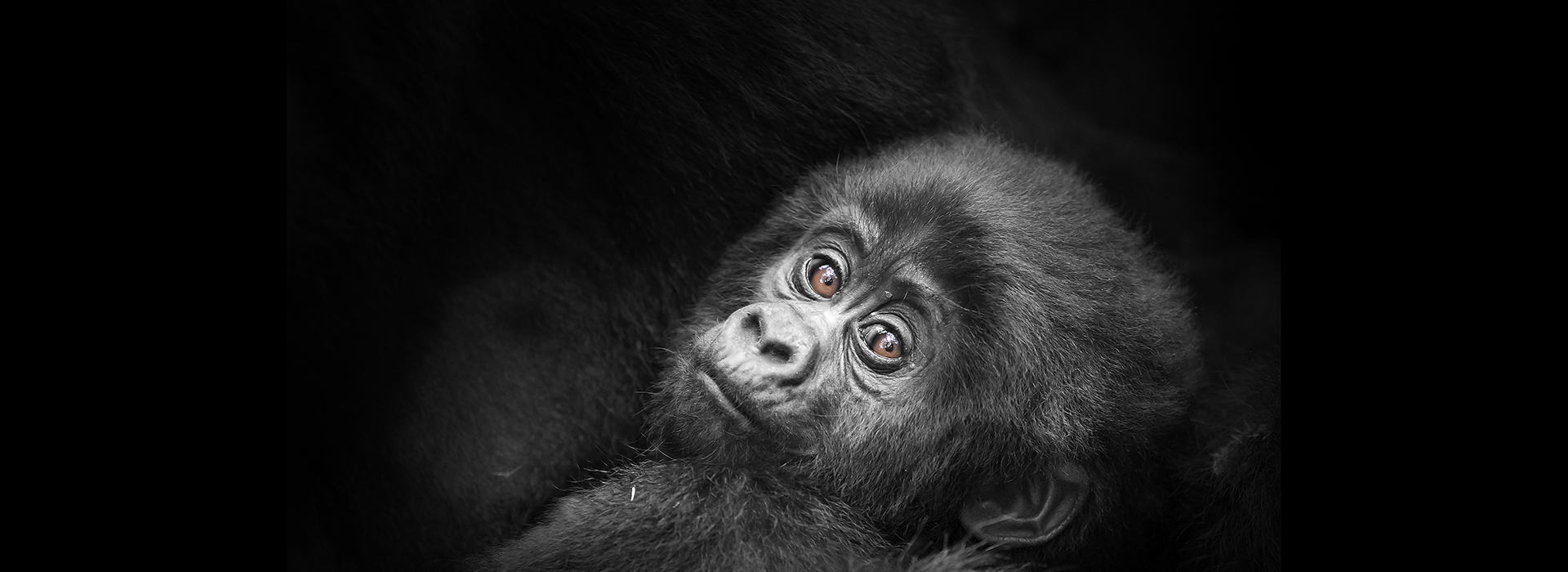
Rwanda & Uganda
A gorilla trekking is a unique experience
Rwanda and Uganda are the best countries for a mountain gorilla trekking. Gorilla trekkings in Rwanda operate similarly to those in Uganda. In both countries, participants gather with others for the gorilla trekking, and on-site rangers determine which gorilla group you will visit. Early in the morning, trackers set out to locate the specific groups, and while you embark on your gorilla trekking, they are usually still in the process of finding the gorillas. It’s almost impossible to predict in advance the distance you’ll need to cover. In both countries, you are allowed to spend a maximum of one hour with the gorillas.
There are about 1000 mountain gorillas alive, highlighting the endangered status of these remarkable creatures. The permit required for a gorilla trek is expensive, but I assure you that the money is very well spent on nature conservation and also benefits the local communities. As a result, mountain gorillas in these areas have attained a very high status, and everything possible is done to protect both the gorillas and their habitats.
Find the habitat of the mountain gorillas
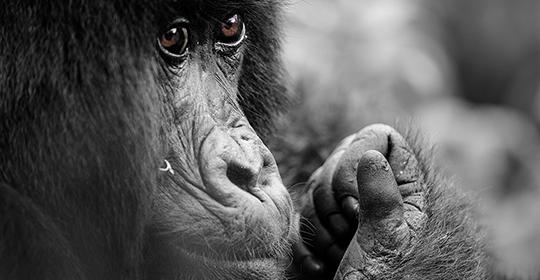
Uganda – Bwindi Impenetrable Forest – gorilla trekking
A gorilla trekking in Bwindi takes you along steep mountainsides and through dense rainforest, an adventure in itself. After hours of hiking, you finally come face to face with these highly endangered animals, a breathtaking experience.
Bwindi is home to at least 12 habituated gorilla groups spread across 4 regions. In the north is the Buhoma region, where three gorilla groups reside. This is where the very first gorilla trek with visitors took place in 1993. It is also the only area in Bwindi where you can stay overnight in the park.
Effortlessly combine this unique gorilla experience with your tailor-made safari journey in Uganda, Kenya, or Tanzania for an unforgettable African adventure.
Rwanda – Volcanoes National Park – gorilla trekking
All gorilla trekkings in Rwanda take place in Volcanoes National Park, home to 10 habituated gorilla groups. The gorillas inhabit the tropical rainforest on the mountainsides, along with chimpanzees and golden monkeys.
Volcanoes National Park gained prominence, particularly through the work of Dian Fossey, who observed gorilla groups there from 1967 for many years. She established the Karisoke Research Center. Volcanoes National Park became the base for an impressive study on the rare mountain gorillas and the associated battle against poaching. Even after Dian Fossey’s death in 1985, presumably at the hands of poachers, efforts persisted in protecting the gorillas. Following the Rwandan Civil War (1990-1999), there was a desire to boost tourism, leading to the initiation of unique “baby naming ceremonies” by the local community. During these ceremonies, baby gorillas are ceremonially given their names. This has had a highly positive impact on both the gorilla population and tourism in the region.
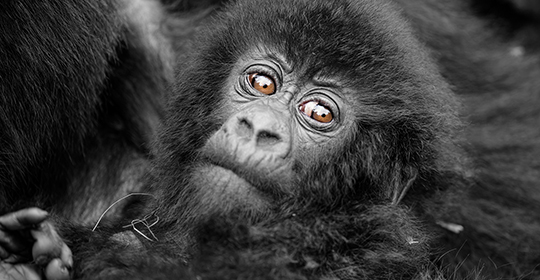
Rwanda & Uganda offer breathtaking gorilla trekkings
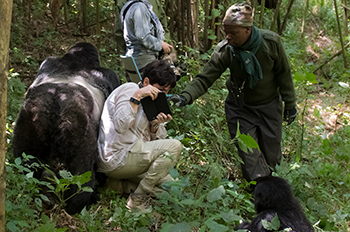
Gorilla trekking: keep seven meters away from the gorillas….
But a gorilla doesn’t know what seven meters is….
It’s an exhausting hike along the mountainsides, through bamboo forests, stumbling over roots, trudging through muddy terrain. But then… the fatigue disappears… there they are. You see females with playful young ones. Then, the silverback walks right by you. Your heartbeat surely spikes for a moment, but how privileged you are to get so close to these gentle, human-like, and incredibly impressive mountain gorillas. A truly unique experience.
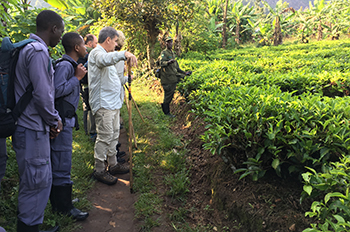
You need to be fit for a gorilla trekking
With a normal level of physical fitness, you can undertake a gorilla trekking..
It’s nearly impossible to predict whether your gorilla trekking will be easy or challenging. Sometimes it goes very smoothly, while other times it can be tough, as gorilla treks take place in mountainous areas with densely forested rainforests. It is advisable to hire a porter for a small fee to carry your backpack with camera gear and food. Porters can also assist you at challenging moments, making the trekking more manageable.
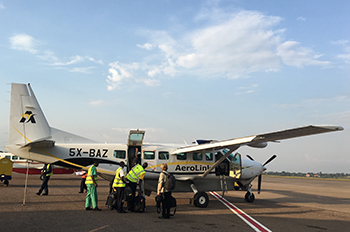
Combine gorillas with other safari wildlife areas
Combine a gorilla trekking with a tailor made safari to Kenya or Tanzania.
If you’re looking for not just an adventurous gorilla trekking but also a fantastic safari experience, a combination of Uganda or Rwanda with Tanzania or Kenya might be perfect for you.
The flying distance between these countries is short, and you can almost directly fly into the Serengeti or Masai Mara. This allows for a seamless transition from the captivating experience of gorilla trekking to the breathtaking landscapes and wildlife encounters offered by the renowned safari destinations in Kenya and Tanzania.
Are you an enthusiastic nature- or wildlife photographer looking to get the most out of your safari trips? Our organized photography safaris are perfect for you. We ensure you have the best opportunities to capture photos and assist you in enhancing your photography skills.
The best time for a gorilla trekking
Gorilla trekkings are possible all year round in both Uganda and Rwanda. Peak season is from June until October and from December until February.
Gorilla trekking
The process of gorilla trekking works the same way in Rwanda as it does in Uganda. In both countries, visitors are allowed to spend a maximum of one hour with the gorillas.
By purchasing a gorilla permit, you contribute to the protection of the gorilla
Although a gorilla permit, necessary for a gorilla trekking, is expensive, this money directly contributes to the conservation of the gorillas’ habitat and the protection of the animals themselves.
The availability of permits for a gorilla trekking is limited. Both in Uganda and Rwanda, there is a maximum of 80 permits per day. In the peak season (June to October and December to February), permits quickly sell out.
Permits in Rwanda are more expensive than those in Uganda.
During the rainy season (March, April, May, and November), you can receive a discount on gorilla permits in Uganda.
.
The opinion of some of our clients
I never could have dreamed that we would get so close to the gorillas: one of the young even pulled at my blouse. They are really mischievous!
At first the climb was rather heavy, but then we saw them. First a few females with their young and then a silverback. A few ‘teenagers’ started playing with each other, right in front of me. It was so beautiful it brought tears to my eyes.




